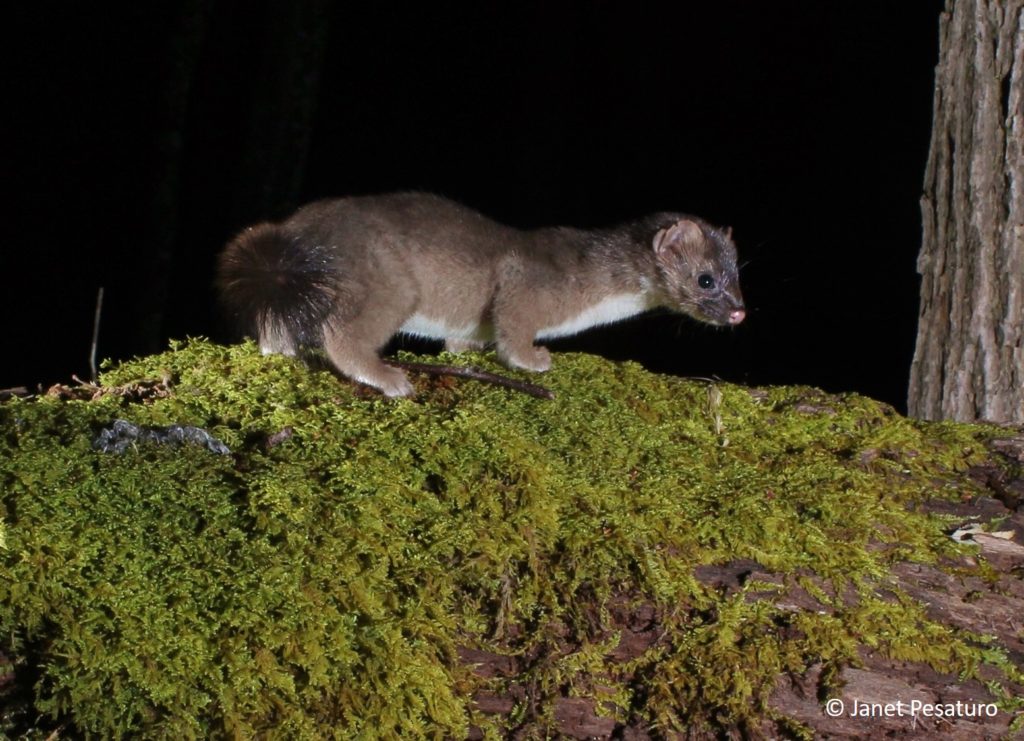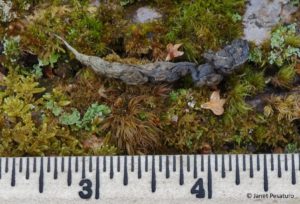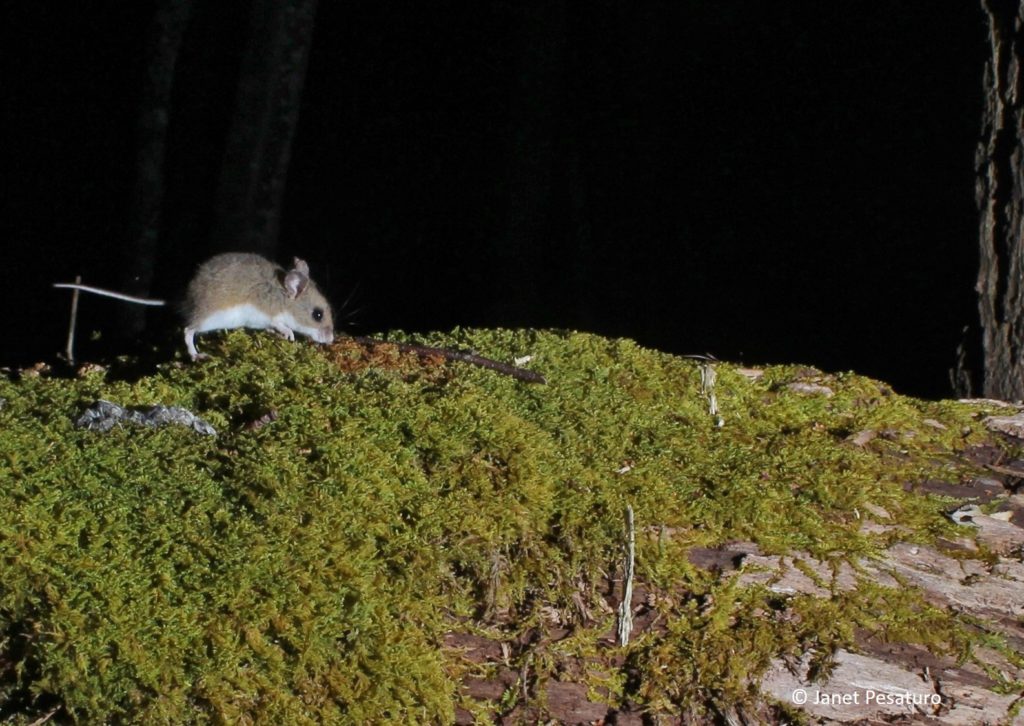Weasel Words

Weasel captured by camera trap targeting a large diameter moss covered log bearing several weasel scats.
Like other members of the mustelid family, the small weasels use their scats to “mark” important resources. They often leave scat on elevated surfaces at territorial boundaries, where they meet or cross paths with other weasels, along travel routes, and in latrines. Latrines, or scat accumulations, are often in or near dens. Dens may be in ground burrows, under log, rock, or brush piles, or in tree cavities, root masses, moss hummocks, grassy tussocks, or hay bales. And since the animal returns repeatedly to a latrine, the latter makes an excellent camera target.
The photo above was captured with our homemade Canon 60D camera trap targeting a log topped with several weasel scats. A few of the scats were clustered where the weasel stands in the photo (look behind the animal and you can see one of them). But the rest of the scats were spaced out along the log, so I am not sure if this qualifies as a latrine or a marked travel route, or perhaps both. In any case, it was clear that a weasel was visiting the log frequently, so it was a promising spot.

A weasel scat of the typical appearance: tiny, fur-filled, and twisted. This one was on a moss covered log, which seems to be a favorite place for weasels to mark.
Try looking for weasel scats on large diameter, mossy logs located near lots of nooks and crannies that could support plenty of small mammals (weasel food) and that offer denning opportunities for weasels. The log in the above photo was on a talus slope among scattered standing and fallen trees. The spaces between boulders and logs provided many hiding places for animals. I’m not sure why weasels prefer logs of large diameter and with plenty of moss, but it is my non-quantitative impression that they do…
Weasels can be captured by standard ready-made trail cameras, but their small size and nervous energy make them challenging subjects. All I ever got of them with my standard cameras were unsatisfying fuzzy images.
Oh, and we have two weasel species in Massachusetts where these photos were taken: the long-tailed weasel and the short-tailed weasel. It’s difficult to distinguish them without a good look at the tail length relative to the body length, but long-tailed weasels are usually larger than short-tailed weasels, which in some cases are no fatter than a deer mouse. Check out the photo of the deer mouse below. The weasel in the other photo is much fatter, so I think it is mostly likely a long-tailed.

A deer mouse on the same log as the weasel in the top photo. Compare the sizes of the two animals.

unglaublich interessant :-)Danke für die tollen Fotos und die Infos über Eure Tierwelt.
Andrea aus Norddeutschland
You are very welcome. I’m glad you enjoy them.